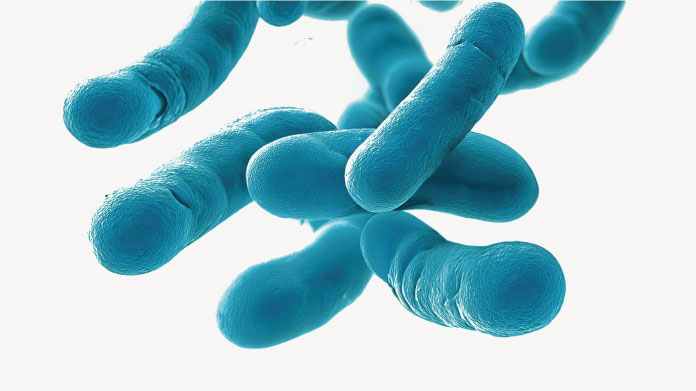Raw foodism: the benefits, risks and best approach to ‘eating raw’
If you’re keen to eat a healthier diet that’s more in tune with nature, you’re almost certainly aware of the trend towards raw foodism. Here we look at its benefits, risks and the best way to approach it.

Raw foodism: what exactly is it?
Within the broad raw food movement, also referred to as ‘living’ food, there are many trends and types of consumer: (1)
- the granivores, who primarily eat seeds;
- the frugivores, who mainly consume fruit;
- the instinctos, who eat foods including animal products without mixing them, in a similar way to a food-combining diet;
- the liquidarians, who consume almost nothing but juices;
- and fans of ‘food ecology’, who eat everything, including meat and insects.
What all these diets have in common is that the food is always, or primarily, eaten raw.
In fact, devotees of raw-foodism actually admit their consumption of raw food is closer to 75%-80%.
The benefits of raw food
Eating a raw food diet normally results in significant weight loss which, for overweight individuals, may be the desired effect (2). This weight loss is the result, in particular, of giving up shop-bought biscuits and other processed foods.
However, this is not what most raw foodists believe to be the main advantage of their chosen diet.
Those responsible for popularising raw foodism claim that ‘eating raw’ enables all the vitamins in a food to be preserved (which is perfectly true), and in particular, all its enzymes too (equally true) (3).
These enzymes are believed to trigger the digestion of certain nutrients (carbohydrates and protein) in the stomach and thus facilitate the digestive process, leading to better absorption by the body.
In addition, as most raw foodists exclude animal-source products and rely mainly on alkalising foods, ‘eating raw’ is likely to promote good acid-base balance in the body.
A raw food diet may therefore lead to renewed energy and less digestive discomfort, and is, above all, a diet that’s closer to that of our ancestors. In this respect, raw foodism directly competes with the paleo diet.
The cooking of food was at the origins of humanity
We should remember, however, that the move to cooking food was one of mankind’s most important advances, as was confirmed by researchers at Harvard Graduate School of Arts and Sciences in a study published in the Proceedings of the National Academy of Sciences (PNAS) (4).
In fact, paleoanthropologists and archaeologists believe that humans have been cooking food for at least a million years and probably longer. It’s now widely accepted that the move to cooking meat was one of the main factors responsible for man evolving into homo sapiens (5).
Indeed, in addition to the fact that cooked meat provides more energy than raw meat (6), that the nutrients it contains are easier to absorb, and that less energy is needed for its digestion (7-8), the decrease in the amount of chewing required for cooked meat led to a reduction in jaw volume and an increase in that of the cranium.
What’s more, archaeologists have been able to prove that humans have also been cooking vegetables for at least 170,000 years, no doubt for the same reasons.
It also seems that cooking softens fibre structures making them less irritating to the colon, and destroys pathogenic microorganisms, thus reducing the risk of food poisoning.
The risks of raw foodism
As the raw food movement has been around for some time, data is available from several studies conducted on its followers. We’ve therefore learned that:
- 30% of women who have adopted a raw food diet appear to suffer from amenorrhea, the total or partial absence of menstruation (9) ;
- exclusively eating raw food results in overconsumption of fructose and certain types of fibre which can lead to digestive problems, bloating, flatulence and diarrhea (10) ;
- ‘eating raw’ can, in certain circumstances, increase the risk of food poisoning, especially when raw meat or fish are consumed without strict observance of hygiene rules;
- above all, raw foodism can lead to deficiency in B12 vitamins, increased blood levels of homocysteine (a predisposing factor in cardiovascular disease), a decrease in ‘good’ cholesterol (HDL) and lower bone density, due notably to a lack of calcium and vitamin D (11-12).
That being said, all these deficiencies can be corrected by adapting the diet and taking dietary supplements such as Methylcobalamine (for vitamin B12), Calcium-AEP or Vitamin D3 5000 IU, for example.
It’s also worth remembering that a multivitamin (such as Daily 3) contains a good level of these minerals and vitamins as well as other health-beneficial compounds.
Eating raw and cooked: a satisfactory ‘middle ground’?
Raw foodism offers undeniable benefits: raw, lacto-fermented or sprouted foods contain many vitamins, minerals and enzymes which, to a degree, promote digestion .
‘Eating raw’ also encourages a feeling of satiety, eliminates cooked fats from the diet, and necessarily involves eating nutrient-rich foods that are excellent for health (fruit, vegetables, seeds, oilseeds, sprouted seeds, etc.).
However, given the risks of a totally raw food diet, most nutritionists and doctors recommend eating a balanced diet comprising 50% raw foods (particularly those mentioned above) and 50% cooked foods (broccoli, potatoes/sweet potatoes, cereal grains, pseudo-cereals, meat, eggs, etc.).
As is so often the case, taking things to extremes with raw foodism poses a risk, while exercising moderation means you reap the benefits of each approach.
References
- DEBRY, G. Les particularités diététiques végétarisme, végétalisme, crudivorisme, macrobiotisme. La Revue du praticien (Paris), 1991, vol. 41, no 11, p. 967-972.
- ROBERTS, Susan B., MCCRORY, Megan A., et SALTZMAN, Edward. The influence of dietary composition on energy intake and body weight. Journal of the American College of Nutrition, 2002, vol. 21, no 2, p. 140S-145S.
- HOWELL, Edward. Enzyme nutrition: the food enzyme concept. Penguin, 1995.
- CARMODY, Rachel N., WEINTRAUB, Gil S., et WRANGHAM, Richard W. Energetic consequences of thermal and nonthermal food processing. Proceedings of the National Academy of Sciences, 2011, vol. 108, no 48, p. 19199-19203.
- WRANGHAM, Richard W., JONES, James Holland, LADEN, Greg, et al.The raw and the stolen: cooking and the ecology of human origins. Current anthropology, 1999, vol. 40, no 5, p. 567-594.
- Carmody, Rachel N., and Richard W. Wrangham. 2009. The energetic significance of cooking. Journal of Human Evolution 57:379–391.
- CARMODY, Rachel N., WEINTRAUB, Gil S., et WRANGHAM, Richard W. Reply to Wollstonecroft et al.: Cooking increases the bioavailability of starch from diverse plant sources. Proceedings of the National Academy of Sciences, 2012, vol. 109, no 17, p. E992-E992.
- Boback, Scott M., Christian L. Cox, Brian D. Ott, Rachel Carmody, Richard W. Wrangham, and Stephen M. Secor. 2007. Cooking and grinding reduces the cost of meat digestion. Comparative Biochemistry and Physiology A 148:651–656.
- KOEBNICK, Corinna, STRASSNER, Carola, HOFFMANN, Ingrid, et al.Consequences of a long-term raw food diet on body weight and menstruation: results of a questionnaire survey. Annals of Nutrition and Metabolism, 1999, vol. 43, no 2, p. 69-79.
- VAN DEN, Truong, BIERMANN, Christopher J., et MARLETT, Judith A. Simple sugars, oligosaccharides and starch concentrations in raw and cooked sweet potato. Journal of Agricultural and Food Chemistry, 1986, vol. 34, no 3, p. 421-425.
- KOEBNICK, Corinna, GARCIA, Ada L., DAGNELIE, Pieter C., et al.Long-term consumption of a raw food diet is associated with favorable serum LDL cholesterol and triglycerides but also with elevated plasma homocysteine and low serum HDL cholesterol in humans. The Journal of nutrition, 2005, vol. 135, no 10, p. 2372-2378.
- CLINE, Jill. Calcium and vitamin d metabolism, deficiency, and excess. Topics in companion animal medicine, 2012, vol. 27, no 4, p. 159-164.
7 Days
A Product worth waiting for when not…
A Product worth waiting for when not available and then arriving as a surprise!
DOMINIC
9 Days
On time shipping
On time shipping
GEORGE Verne
11 Days
Ordering was easy and the product was…
Ordering was easy and the product was delivered with no problems. Appreciated that I was notified when it would arrive. Thanks!
MascarC
16 Days
Great customer service - responsive …
I ordered from them and my item was unavailable for sometime. I was super happy when they reactivated my order and shipped my item which arrived very quickly. Great customer service.
Ruth Rueter
17 Days
Super fast shipping
Super fast shipping
Donald Borling
20 Days
Reputable companysearch and the number of…
The research and the number of selection of products.
NAKHJAVAN Shervin
33 Days
The Anti Aromatase is a great product
The Anti Aromatase is a great product. You just need to have constant inventory. Recently this product has been out of stock.
GEORGE Verne
35 Days
Great help on chat
Great help on chat. Knowledgeable and friendly.
Jason Argos
38 Days
Customer service was fast and friendly.
Customer service helped to stop the transaction process of the subscription. I appreciated that.
Greenie
39 Days
I order here due to the high quality of…
I order here due to the high quality of the products and the quick delivery of items - thank you
Barbara J
40 Days
SuperSmart's Eye Pressure supplements: highly recommended!
I purchase SuperSmart's Eye Pressure supplements regularly for over 5 years, and gotta say they are truly a wonderful product for my Glaucoma. Highly recommended if you have eye pain from your Glaucoma.
D. Martinez
45 Days
Quick service
Quick service
MONELL
45 Days
Speedy service.
Speedy service.
ROSENTHAL Marvin
49 Days
Clear website- Efficient
Clear website. Excellent search engine and fast delivery!
Mohamad Hussein
51 Days
They have great products.
They have great products.
Vickie



